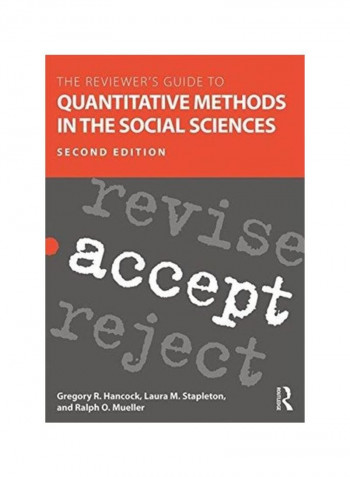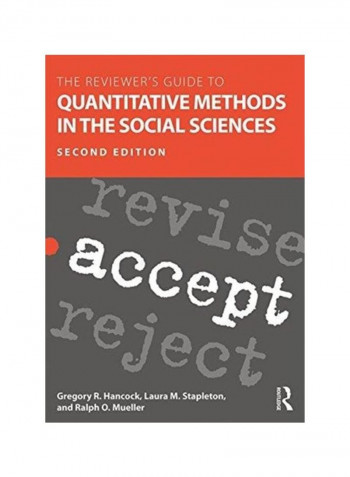The Reviewer's Guide To Quantitative Methods In The Social Sciences Paperback 2
نوصي
ترتيب حسب
تقييم
انشأ من قبل
Specifications
الدرجة
New
وصف الكتاب
The reviewer's guide to quantitative methods in the social sciences provides evaluators of research manuscripts and proposals in the social and behavioral sciences with the resources they need to read, understand, and assess quantitative work. 35 Uniquely structured chapters cover both traditional and emerging methods of quantitative data analysis, which neither junior nor veteran reviewers can be expected to know in detail. The second edition of this valuable resource updates readers on each technique's key principles, appropriate usage, underlying assumptions and limitations, providing reviewers with the information they need to offer constructive commentary on works they evaluate. Written by methodological and applied scholars, this volume is also an indispensable author's reference for preparing sound research manuscripts and proposals.
رقم الكتاب المعياري الدولي 10
1138800139
رقم الكتاب المعياري الدولي 13
9781138800137
اللغة
English
الناشر
Taylor And Francis Ltd
تاريخ النشر
22 Nov 2018
عدد الصفحات
502
محرر 1
Ralph O. Mueller
رقم الطبعة
2
محرر 2
Gregory R. Hancock
المراجعة التحريرية
Updated and even more useful, this much-needed volume fills a gap for review consultation and instructional purposes. Highly recommended! Michael g. Vaughn, saint louis university the first edition of this book belongs on every reviewer's bookshelf. The second edition is even better and covers topics missed in the first. David l. Streiner, mcmaster university as an editor for more than 20 years, I had long wrestled with what graduate students and reviewers need to understand and address when evaluating the quality of the quantitative analyses reported in manuscripts. That problem is made even more frustrating by the range of quantitative methods populating the educational research literature. Thanks to this outstanding volume those nagging concerns have largely been put to rest. What these respected editors have compiled are 35 insightful chapters, each devoted to a particular quantitative method and written by an acknowledged expert. Each chapter not only succinctly overviews a given technique, but also delineates the musts and shoulds of its reporting, which are summarized in an easily referenced table. I plan to make this essential guide required reading for all my graduate students and for every editorial board member. Patricia a. Alexander, jean mullan professor of literacy, distinguished scholar-teacher, university of maryland. Senior editor, contemporary educational psychology greg hancock and his colleagues have done it again. The second edition of the reviewer's guide to quantitative methods in the social sciences offers 35 chapters written by top-of-the line quantitative researchers who inspire, instruct, and illuminate. The chapters provide key information that is essential in evaluating a wide swath of methods including basic and multivariate statistics, research design, statistical inference procedures, psychometrics, latent variable methods, modeling and more. Every social scientist would benefit from this gem of a volume that cannot help but leave readers more informed, enlightened, and empowered lisa l. Harlow, professor of psychology, university of rhode island
محرر 3
Laura M. Stapleton



